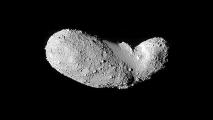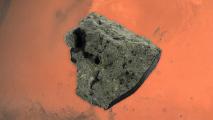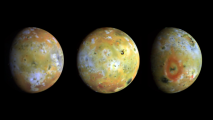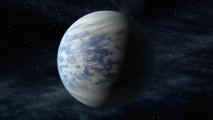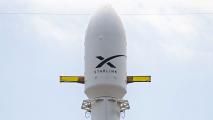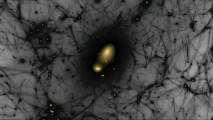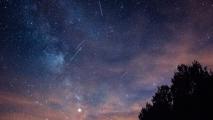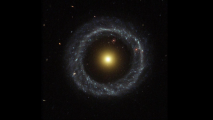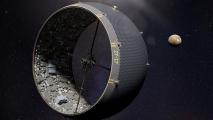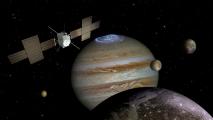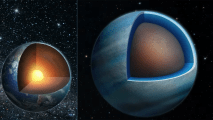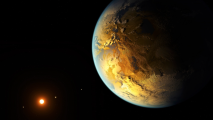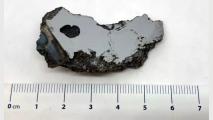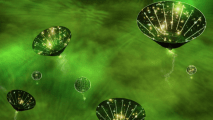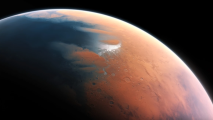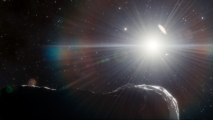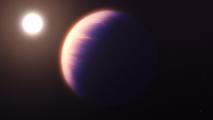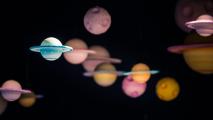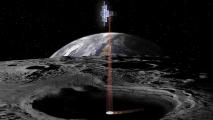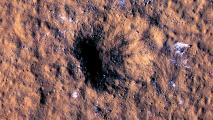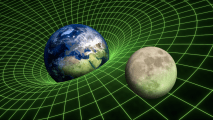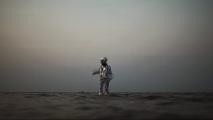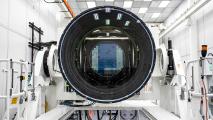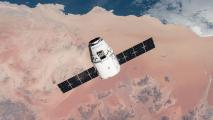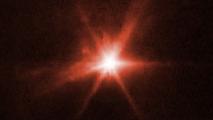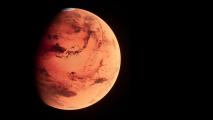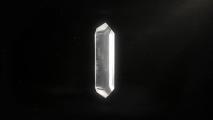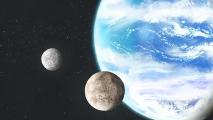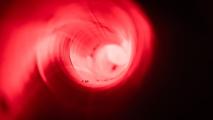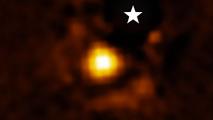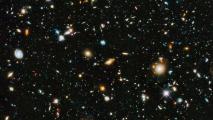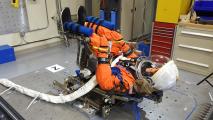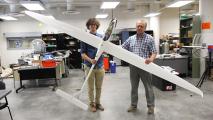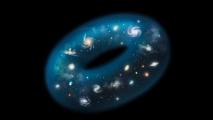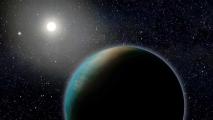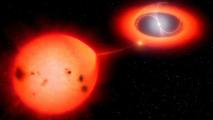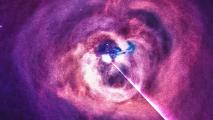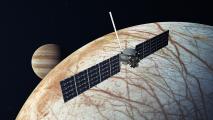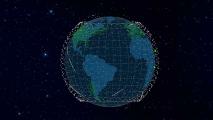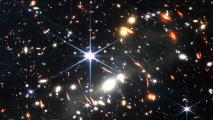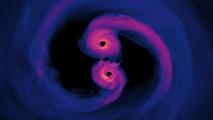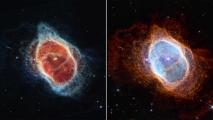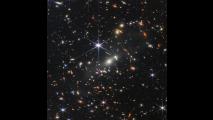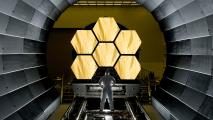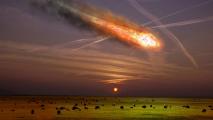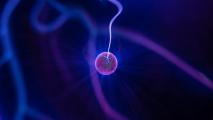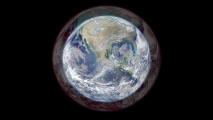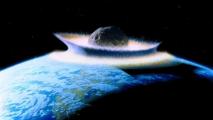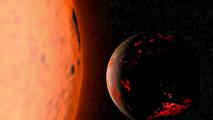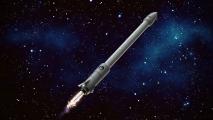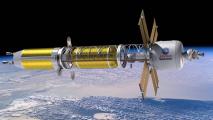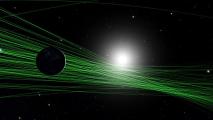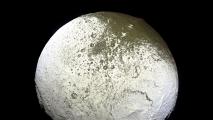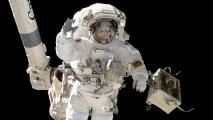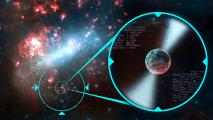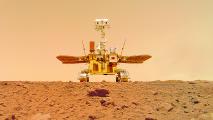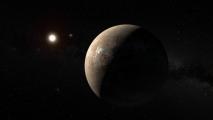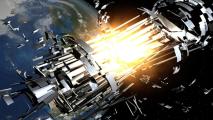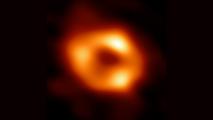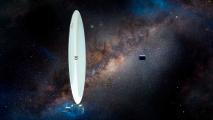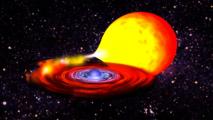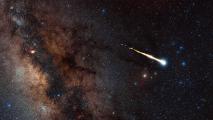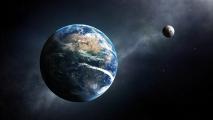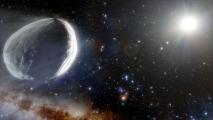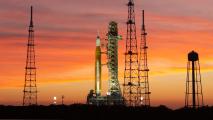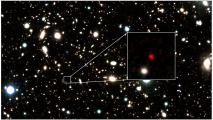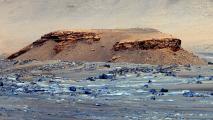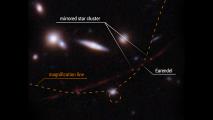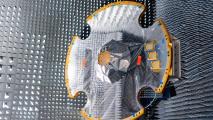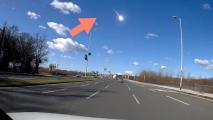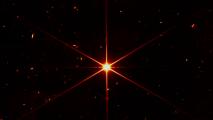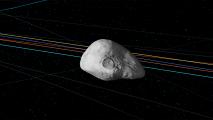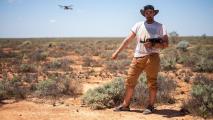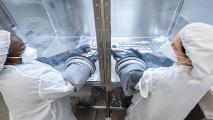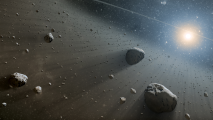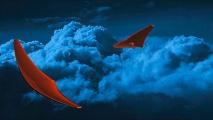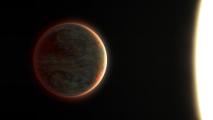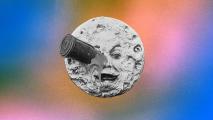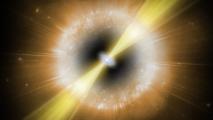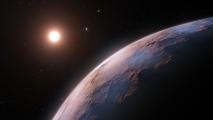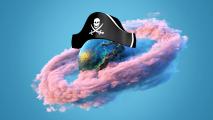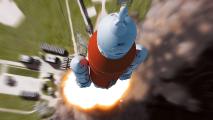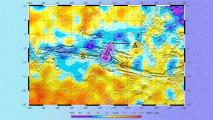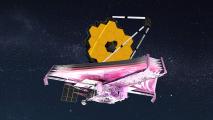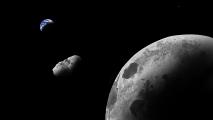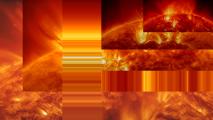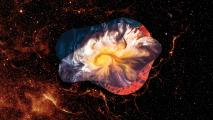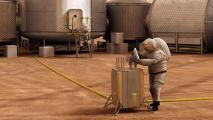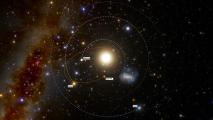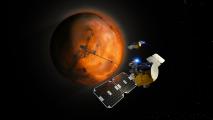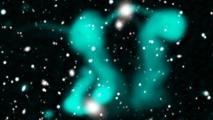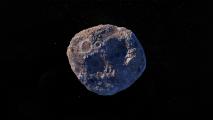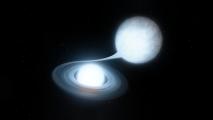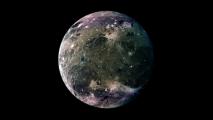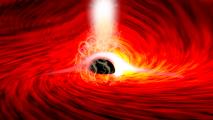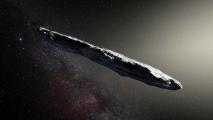Field: Astronomy
This near-Earth asteroid is 4.2 billion years old and nearly indestructible
By analyzing just three dust particles, researchers learned that the rubble pile asteroid Itokawa is 4.2 billion years old and hard to kill.
Rare Martian meteorite is full of complex carbon molecules
A 650-million-years-old meteorite found in Africa shows the rich and complex chemistry that once happened on Mars.
Jupiter’s hot “pizza moon” may contain life
Jupiter's moon Io is thought to be inhospitable, but new data suggests life could exist underground, perhaps in lava tubes.
NASA announces alien-hunting Habitable Worlds Observatory
NASA has announced that it is developing the Habitable Worlds Observatory, a new space telescope optimized to hunt for extraterrestrial life.
SpaceX puts Starlink promises to astronomers in writing
SpaceX has signed an agreement with the National Science Foundation detailing its plans to minimize Starlink’s impact on astronomy.
The case for dark matter has strengthened
Though it makes up about 26% of the Universe, we cannot see dark matter. But we know it's there because we can see its effects.
What happens when an astrophysicist puts ChatGPT to the test?
Can an astrophysicist get ChatGPT to learn and assimilate new information and give correct answers where it gave confident but false ones?
Ring galaxies, the rarest in the Universe, finally explained
After decades of wondering how ring galaxies form, we've caught them in enough stages of evolution that we finally know where they come from.
A far-out plan to build an asteroid city
University of Rochester researchers think they have a solution to creating an asteroid city: a giant bag.
The 12 most exciting space missions of 2023
2023 will see the launch of new rockets, the return of OSIRIS-REx, and a mission to Jupiter that could help us find extraterrestrial life.
Twin exoplanets may be the first known “water worlds”
Twin exoplanets 218 light years from Earth may be the first known examples of “water worlds.”
An Earth-sized planet found in the habitable zone of a nearby star
For a long time, only two habitable zone planets of any size were known to astronomers: Earth and Mars. But NASA's discovered another.
Scientists discover two brand new minerals in massive meteorite
A massive, 4.5-billion-year-old meteorite located in Somalia contains two new minerals never seen before in nature.
Are we living in a baby universe that looks like a black hole to outside observers?
If the black holes that form in our cosmos give birth to baby Universes, perhaps we arose from the formation of a black hole ourselves.
Ancient killer asteroid created a megatsunami on Mars
3.4 billion years ago, an asteroid impact created a megatsunami on Mars that extended for 1500 kilometers. Here's the fascinating story.
What the new Earth-threatening asteroid means for humanity
In a remarkable achievement, three new large asteroids have been found in the most elusive place: inside the orbit of Earth.
Astronomers detect “mystery molecule” in exoplanet’s atmosphere
Thanks to the James Webb Space Telescope, we now know more about the atmosphere of WASP-39b, a distant gas giant, than any other exoplanet.
What is the largest planet out of all the ones we know?
The "upper limit" to the size of our planets is exceeded in other stellar systems, but double Jupiter's radius seems to be the limit.
NASA “Flashlight” will hunt for hidden water on the moon
NASA’s Lunar Flashlight mission will use reflections from laser light to measure lunar water hidden in permanently shadowed craters.
Meteorite blasts “biggest new crater” NASA has ever seen into Mars
A meteorite impact that caused a marsquake and created a massive new Mars crater could shape our plans to send people to the Red Planet.
Einstein’s theory of general relativity passes another test, with implications for dark matter and dark energy
Scientists carried out an ultra-precise test of a core premise of Einstein’s modern theory of gravity. The theory stood up.
The technology we (or aliens) need for long-distance interstellar travel
Interstellar distances are vast, and extremely advanced technology will be required if we (or aliens) want to visit other star systems.
Astronomers unveil world’s largest digital camera
In 2024, the LSST Camera will begin a 10-year-long survey of space that could revolutionize astronomy — if LEOsats don’t get in the way.
SpaceX wants to save Hubble. NASA may be on board.
NASA and SpaceX may use a Dragon spacecraft to boost the Hubble Space Telescope into a higher, life-saving orbit.
Webb, Hubble capture spacecraft slamming into asteroid
DART collision images captured by NASA's Hubble and James Webb space telescopes show what happens when a spacecraft slams into an asteroid.
A neural network discovered Copernicus’ heliocentricity on its own
Scientists trained a neural network to predict the movements of Mars and the Sun, which placed the Sun at the center of our solar system.
Elon Musk: Starship rocket “highly likely” to fly in November
SpaceX’s massive Starship rocket is “highly likely” to complete its first orbital test flight in November 2022, according to CEO Elon Musk.
China has discovered a brand new moon mineral
A new moon mineral discovered by China contains helium-3, an element that could one day fuel nuclear fusion reactors on Earth.
Continents may be the key to whether exoplanets can harbor life
New simulations of continent distribution could help astronomers assess whether newly-discovered exoplanets may be habitable.
What are wormholes? An astrophysicist explains
A wormhole is like a tunnel between two distant points in our universe that cuts the travel time from one point to the other.
NASA’s James Webb takes its first direct image of an exoplanet
NASA’s James Webb Space Telescope (JWST) has directly observed an exoplanet for the first time — ushering in a new era of exoplanet research
There are more galaxies in the Universe than even Carl Sagan ever imagined
There are between 6 and 20 trillion galaxies out there. Carl Sagan's "billions and billions" was far too low of a guess.
Three crucial experiments aboard NASA’s moon rocket
These Artemis 1 experiments could protect NASA astronauts and help usher in a future in which space is accessible to everyone.
Future sailplanes could explore Mars like birds
Sailplanes could harvest wind energy from Mars’ atmosphere, probing unexplored regions for long stretches of time.
The Universe is flat. Here’s what that teaches us.
When we measure it, we find that our Universe really is flat. Here's what we can learn from that, and why it matters so much.
Newly discovered exoplanet may be first covered in liquid water
The first ocean planet may have just been discovered in the “Goldilocks zone” of a star 100 light-years from Earth.
A new nova disappeared faster than ever, and an even bigger cosmic catastrophe is coming
Today, the fastest-ever nova to fall off has been discovered, and even faster ones may be out there. What comes next?
Listen to the sound of a black hole, remixed by NASA
NASA scientists have “remixed” the incredibly deep sounds emitted by a black hole 240 million light-years away.
NASA thinks it may snow upside down on Europa
A study of “underwater snow” on Earth is informing NASA’s hunt for habitable locations on Jupiter’s icy moon Europa.
Earth’s orbit is about to get way more crowded
Satellite mega constellations could bring the world online, but they're also a threat to astronomy. Can we study space and build in it, too?
7 spectacular lessons from James Webb’s first deep-field image
With its first deep-field image, the James Webb Space Telescope has truly ushered in an entirely new era in astronomy and astrophysics.
Black hole mergers obey the laws of thermodynamics
An analysis of the gravitational wave data from black hole mergers show that the event horizon area, and entropy, always increases.
James Webb’s first science images: before-and-after
The James Webb Space Telescope's first set of science images showcases the breadth of the observatory’s capabilities.
James Webb’s record-breaking first science image: explained
On July 11, 2022, the very first science image of the James Webb Space Telescope was unveiled to the world.
NASA teases Webb telescope’s first images with list of targets (Updated)
NASA has announced the first targets for the James Webb Space Telescope and plans to share the full-color images on July 12.
The cosmos can kill us in many ways. But the James Webb Space Telescope can help save us
Asteroid strikes, supernova explosions, and gamma-ray bursts are just a few of the ways the cosmos can kill us.
Scientists see “rarest event ever recorded” in search for dark matter
Researchers observed an ultra-rare particle interaction that reveals the half-life of a xenon-124 atom to be 18 sextillion years.
Chinese astronomers unveil a plan to find Earth 2.0 — and aliens
China’s Earth 2.0 mission will survey the Milky Way in the hope of identifying exoplanets similar to Earth.
What happens if the Solar System’s largest comet collides with Earth?
The asteroid that caused the last mass extinction 65 million years ago was only 5 kilometers across — tiny compared to this one.
When will the Earth come to an end?
There are many different "ends" in store for our planet, in both the near and far future. Here are the ways our planet will meet its demise.
Ukrainian startup expects to fly “self-devouring” rocket in 2022
Ukrainian startup Promin Aerospace is developing a “self-devouring” rocket built from a material that its engine can burn as fuel.
US plans to put nuclear-powered spacecraft in orbit by 2026
Nuclear thermal propulsion systems could power missions to Mars, help defense satellites evade attacks, and more.
We have a new way to hunt for potentially hazardous asteroids
To help protect Earth from potentially hazardous asteroids, astronomers developed an algorithm to look for them in existing datasets.
After 350 years, astronomers still can’t explain the solar system’s strangest moon
Saturn's Iapetus, discovered way back in 1671, has three bizarre features that science still can't fully explain.
NASA to help put first Japanese astronaut on the moon
The first non-American to reach the lunar surface will likely do so as part of NASA’s Artemis mission — and could be a Japanese astronaut.
Telescope “sunglasses” find brightest pulsar outside our galaxy
Australian astronomers have discovered the brightest pulsar ever seen outside the Milky Way by putting “sunglasses” on a telescope.
Perseverance rover kicks off new hunt for life on Mars
NASA’s Perseverance rover has begun its Delta Front Campaign, the part of its mission most likely to produce evidence of past life on Mars.
Chinese rover makes surprise discovery about liquid water on Mars
Data from China’s Zhurong rover suggests there was substantial liquid water on Mars far more recently than we thought.
Stanford’s gravity telescope concept uses the sun to see exoplanets
Stanford scientists have designed a gravity telescope concept that could take stunningly clear images of exoplanets.
How the Kessler Syndrome can end all space exploration and destroy modern life
The sheer amount of stuff already floating in space makes the domino effect of explosions a likely possibility.
Everything we now know about the Milky Way’s supermassive black hole
The Event Horizon Telescope team has finally revealed what the supermassive black hole at the center of the Milky Way looks like.
How NASA’s liquid lenses could revolutionize space exploration
NASA recently tested a liquid lens technology that could make a space telescope so large it would dwarf all that have come before.
First of its kind “black widow” pulsar discovered
A new black widow pulsar has been discovered eating its companion star while a third star circles the binary system.
Space Force claims interstellar object hit Earth in 2014
The astronomy community is divided on whether a meteor detected in 2014 is the first interstellar object spotted in our solar system.
Gravitational waves could be “pushing” the Moon
A new study suggests we use the orbit of the Moon to find gravitational waves we can’t currently detect in other ways.
Largest comet ever seen is 80 miles wide, says NASA
Comet Bernardinelli-Bernstein is the largest comet ever observed, according to a new study based on Hubble Space Telescope data.
NASA’s massive SLS rocket is one test away from launch
NASA's moon-bound SLS rocket is at Kennedy Space Center and ready for its wet dress rehearsal — the last major test before launch.
Farthest galaxy from Earth discovered by Tokyo astronomers
Astronomers have discovered a new farthest galaxy from Earth, and it could change what we thought we knew about the early universe.
Rover images confirm Jezero crater is an ancient Martian lake
Without driving anywhere, the rover was able to solve one of the big unknowns, which was that this crater once held water.
Hubble smashes record for farthest star ever seen
NASA's Hubble Space Telescope has smashed its own record for farthest star ever seen with the detection of “Earendel.”
ESA space telescope snaps pic of new NASA neighbor
ESA’s Gaia observatory has snapped a photo of NASA’s James Webb Space Telescope, its new neighbor at Earth’s second Lagrange point.
Meteorite’s fall to Earth retraced with dashcam footage
The unconventional method could help astronomers better track meteorites that fall during the daytime.
NASA shares stunning star image taken by Webb telescope
A star image taken by NASA’s James Webb Space Telescope suggests the first-of-its-kind spacecraft is going to work even better than expected.
New asteroid spotted just before impact with Earth
NASA successfully pinpointed almost exactly where and when a new asteroid would hit Earth’s atmosphere, before it made contact.
Drones and AI recover a meteorite for the first time
Australian researchers have trained an AI to locate fallen space rocks using footage from autonomous drone surveys.
NASA opens untouched moon rock container from 50 years ago
NASA is opening a vacuum-sealed sample of moon rock and gas to help astronauts prepare for the next mission to the moon.
An asteroid could wipe out an entire city – here’s NASA’s plan to prevent catastrophe
Cosmic bodies, like asteroids and comets, are constantly zooming through space and often crash into our planet.
NASA considers stingray-like drone to fly the skies of Venus
The winged drone is designed to ride 200-mph Venusian winds.
Hubble gets first good look at the dark side of a “hot Jupiter”
The first detailed look at the dark side of a hot Jupiter exoplanet reveals conditions that could create metal clouds and liquid gem rain.
A rogue rocket is on course to crash into the Moon. It won’t be the first.
Earlier in the Space Age, little thought was given to leaving what many call “trash” on the lunar surface.
Record-breaking supernova manages to “X-ray” the entire Universe
“When I saw the data, I didn’t believe the analysis...This is the brightest Cow supernova seen to date."
New exoplanet discovered orbiting Proxima Centauri
A third exoplanet has been discovered orbiting Proxima Centauri, and it’s one of the lightest astronomers have ever detected.
NASA gets first images from James Webb telescope
NASA has shared the James Webb Space Telescope’s first images, and so far, it looks like the epic spacecraft is working exactly as hoped.
Astronomers have found the biggest group of rogue planets yet
Using ground telescopes and satellite observations taken over decades, researchers have identified the largest number of wandering rogue planets yet.
The most anticipated space missions of 2022
2022 will be a big year for space missions, with huge rocket launches, several rover rollouts, and a first-of-its-kind asteroid collision.
Water on Mars found hidden in massive canyon
Scientists have discovered a huge store of hidden water on Mars, and it’s just below the surface of the Valles Marineris canyon system.
The Hubble Space Telescope is dying. Here’s what’s next.
With Hubble living on borrowed time, NASA and its partners prepare to launch the satellite's successor: the James Webb Space Telescope.
This near-Earth asteroid may be a chunk knocked off of the moon
A near-Earth asteroid discovered in 2016 may have once been part of the moon — making it unlike any space rock we’ve ever discovered.
See the surface of the sun evolve in stunning time lapse
A stunning time lapse of the surface of the sun created using NASA images shows the activity that occurs over the course of just one month.
Mystery of Chinese supernova solved after 800 years
A new study explains where the mysterious “Chinese supernova” went after disappearing from the night sky more than 800 years ago.
Space radiation won’t stop missions to Mars
A new study predicts that space radiation alone wouldn’t make missions to Mars too risky for astronauts — as long as we timed them right.
Astronomers discover solar system’s fastest-orbiting asteroid
Astronomers have discovered an asteroid that orbits the sun in just 113 days, making it the fastest-orbiting asteroid in our solar system.
Twin Mars satellites have greenlight for launch
Two tiny Mars satellites will head to the Red Planet in 2024 as part of a NASA program testing smaller spacecraft on planetary missions.
Astronomers catch “ghosts” dancing around radio galaxies
Astronomers with the EMU Project have released a spooky image of “dancing ghosts” emanating from a pair of distant radio galaxies.
Psyche asteroid might not be a planetary core after all
The first high-res heat emissions map of the Psyche asteroid suggests the hunk of metal might not be the core of a developing planet.
“Star shrapnel” from a supernova explosion is exiting the galaxy
A metallic star is hurtling out of the Milky Way, propelled by a supernova explosion triggered after it ate its partner star as a white dwarf.
Water vapor found on Jupiter’s moon Ganymede
Astronomers have detected the first evidence of water vapor in the atmosphere of Jupiter’s massive moon Ganymede.
Light from behind supermassive black hole detected for first time
The first direct observation of light from behind a supermassive black hole confirms a prediction in Einstein’s theory of general relativity.
Harvard astrophysicist will lead hunt for alien technology
Harvard astrophysicist Avi Loeb’s new Galileo Project will hunt for alien technology using proven scientific methods and equipment.
Baby exoplanet appears to be forming a moon
A unique baby exoplanet surrounded by a disc of gas and dust could unravel some of the mystery surrounding planet and moon formation.
